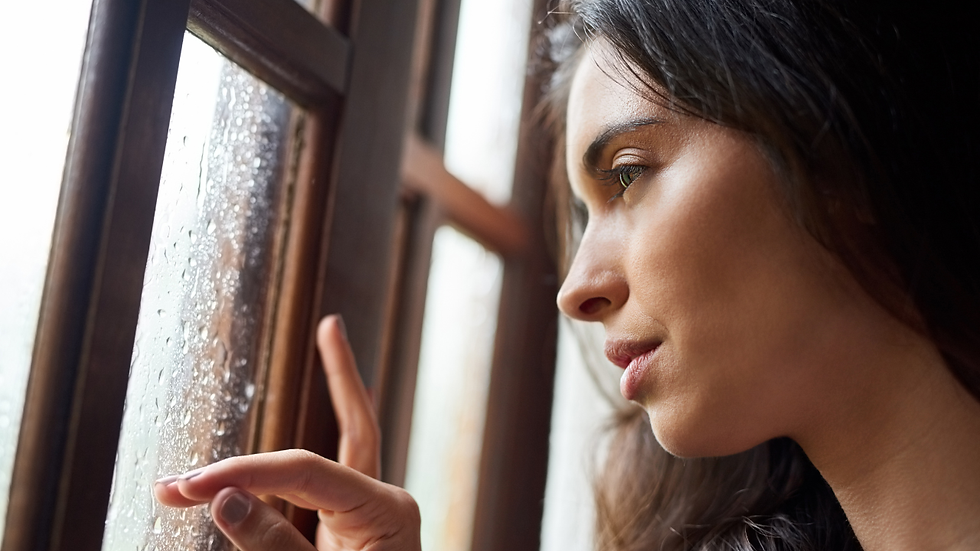Winter-Proof Your Mood: ADHD-Friendly Strategies for Staying Steady All Season Long
- Agave Health Team

- 4d
- 4 min read
The winter season can quietly shift the way your brain functions. Shorter days, colder weather, and holiday disruptions often affect how consistently you sleep, move, and regulate emotions. For adults with ADHD, those changes can feel sharper: energy dips faster, routines fall apart, and overwhelm or anxiety, become harder to shake. You’re not imagining it. There are real, brain-based reasons winter hits harder.

Why Winter Can Feel More Intense for ADHD Brains
Reduced sunlight plays a big role. Less natural light affects dopamine and your internal clock, making mornings groggier, motivation harder to access, and focus more inconsistent. Winter also disrupts the structure that ADHD brains depend on. School breaks, holiday travel, and unpredictable schedules can make daily life feel less stable.
At the same time, sensory input ramps up. Holiday shopping can be especially overwhelming, with loud music, crowded aisles, bright lights, and nonstop sensory input. When that’s layered on top of seasonal gatherings and the extra clutter that builds up at home, it becomes even easier for ADHD brains to hit overwhelm quickly.
Common winter challenges for ADHD brains include:
Heavier emotional swings or irritability
Feeling more scattered or unmotivated
Higher stress and anxiety
Exhaustion or low mood
Difficulty maintaining routines
Sensory overload in day-to-day environments
ADHD-Friendly Ways to Winter-Proof Your Mood
Create a Light-First Morning Routine
Light is one of the most powerful tools for stabilizing mood and energy in winter. A few minutes can help regulate dopamine and your sleep-wake cycle.
Try:
Opening blinds right when you wake up
Sitting near a sunny window for breakfast
Using a 10,000-lux light therapy lamp
Pairing light with a dopamine-friendly habit like coffee, music, or an enjoyable scroll
Build a Gentle Winter Rhythm
Instead of rigid routines, think about winter as a time for flexible anchors. These small touchpoints help your brain feel steadier even when the season disrupts your usual flow.
Consider creating:
One morning anchor (water, light, or a short task)
One midday reset (movement, sunlight, or a snack)
One evening wind-down that stays consistent
These rhythms help your brain know what to expect without forcing perfection.
Use Movement as a Mood Regulator
Movement helps regulate ADHD symptoms, but cold weather makes it harder to stay active. Small, doable actions make a big difference.
Helpful options:
Five-minute stretching
A short dance break
A brisk outdoor walk if the weather allows
Light indoor movement, such as walking around your home or going up and down the stairs
A few bodyweight exercises like squats, lunges, or wall push-ups
A short guided workout video (10 to 15 minutes of yoga, strength, or cardio)
It doesn’t need to be a full workout. It just needs to get your body moving.
Plan Ahead for Sensory Overload
Winter brings a higher sensory load, from busy stores to loud gatherings. Planning ahead can greatly reduce overwhelm.
Try:
Noise-reducing earbuds for malls or even holiday group gatherings
Taking a brief pause in your car before going into a busy store to steady your breathing or center yourself
Taking a quiet minute at home after errands to decompress before jumping back into your day
Creating a quiet, cozy corner where you can intentionally regulate at home
Limiting visual clutter in the spaces you use most
Using softer lighting, like lamps instead of overhead lights
These small adjustments buffer your nervous system.
Stay Connected in Low-Effort Ways
Isolation can worsen ADHD symptoms and mood, especially in winter. Low-pressure connection keeps your emotional regulation steady.
Low-effort options:
A quick call or voice note to a good friend
Virtual coworking
Meeting a friend for a short errand or walk
Sitting with a family member or roommate while you each do your own thing
Dropping into an Agave group or body doubling
Connection doesn’t have to be socializing. Sometimes it’s just not being alone.
Reset Your Space for the Season
Winter gear and holiday items can add clutter that increases ADHD overwhelm. A quick reset can make your space and your brain feel lighter.
Focus on:
One area (like your desk or entryway)
One category (coats, mugs, mail)
A daily reset where you clear what you can in about 10 minutes
Small resets keep your environment manageable and help your space feel calmer.
Know When to Reach Out for Extra Support
Seasonal depression shows up more often in people with ADHD, and emerging research supports this. A recent study published in the Journal of Psychiatric Research found that adults with ADHD experienced significantly higher rates of seasonal mood changes compared to neurotypical adults, which helps explain why ADHD and winter depression are so common (Sciarretta et al., 2025). (Sciarretta et al., 2025).
If you notice persistent fatigue, irritability, loss of interest, or difficulty functioning, it might be time to talk to someone. Support is a strength, not a setback.
You Don’t Have to Navigate Winter Alone
Agave Health offers ADHD coaching and therapy to help you build steady routines, regulate emotions, and adjust to seasonal shifts. If winter feels heavier this year, our team is here to support you with strategies tailored to your brain.
Looking for personalized support this season? Connect with an Agave coach or therapist in the app.

Comments